| |
|
|
| |
Keeping up with the Caddisians !
Fri 8th November, 2013
|
|
|
|
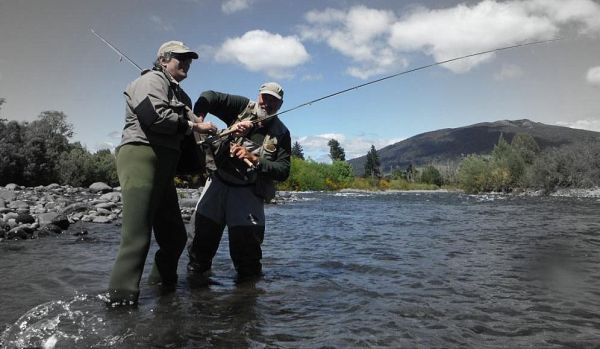 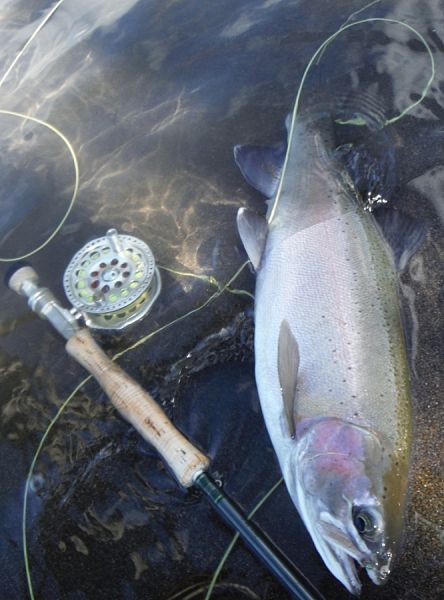
There are still plenty of fish in the river but the lack of anglers below the bridge will tell you the main spawning runs are well and truly over.
The majority of trout we catch from now on will be mending fish but a lot of these kelts seem to have recovered well after spawning.
Thinking about it, so far I've caught very few kelts that have looked completely knackered.
The timing of the September and October floods probably explains some of it ... removing a lot of the weaker fish from the equation fairly quickly.
But they're not all slabs and every so often you'll get a nice surprise like the fish pictured here.
First time visitor Stan who was on vacation from California didn't mind what he caught and with some help from regular face Leon was delighted with the couple of fish I watched him land. As he explained later they were three times the size of the fish he's used to catching back home.
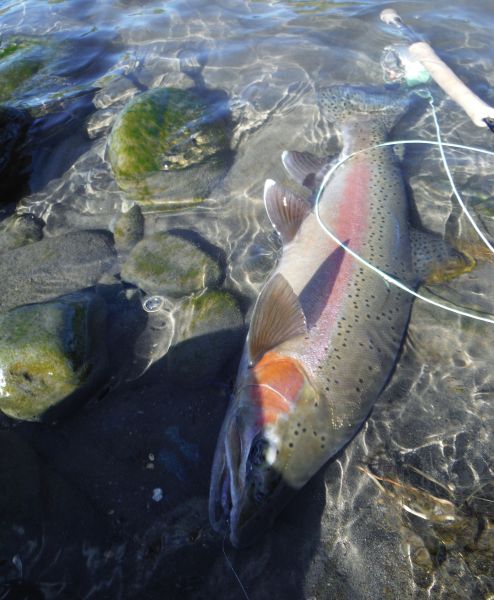 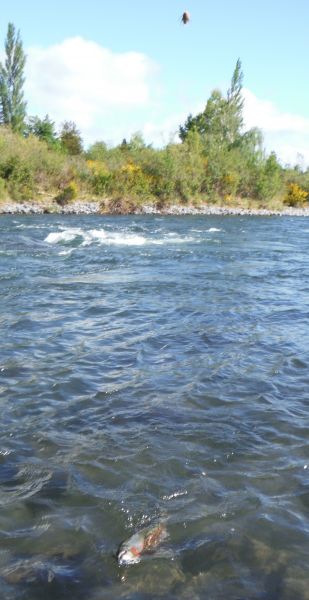
I like this time of year on the river. OK things are not quite as easy as they were a few weeks ago and many give up on the Tongariro when the runs are over and pack away their bombs and globugs until the autumn.
But there's more than one way to skin a cat. By using a totally different approach, lighter tackle and re-thinking the presentation you can still have fun out there.
Personally I can think of nothing better than fishing at dawn as the sun warms your back and chases away the chill of a late spring morning.
With summer approaching you can to start to look for your fish in the shallower faster stretches, runs, riffles tail-outs or the rougher water at the head of a pool ... typical caddis water.
This is especially important as the temperatures heat up and the river gradually drops back to its summer level, lowering the dissolved oxygen content in slower parts of the river.
Arming yourself with a 6 or 7 wt outfit makes a nice change from the heavy winter gear and allows you to use much lighter methods.
You don't have to be " hard down " all of the time now because trout will be feeding at all depths.
The set-up pictured left is a great way to mimic a caddis pupa, dislodged larva or emerging mayfly nymph and from now on will fool a lot of fish. 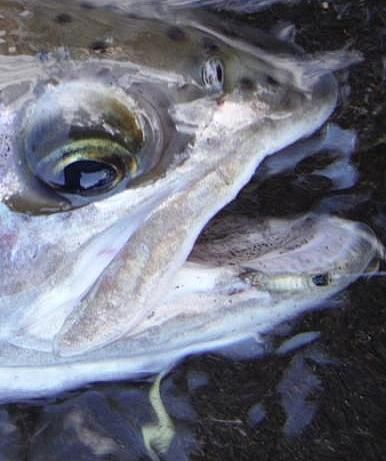
Out of the "big three" ... that's caddis, mayfly and stonefly its caddis that are probably the more important food for hungry Tongariro trout.
If you look on the underside of rocks, caddis larvae will often outnumber other nymphs.
Something you'll notice around this time every year is that trout will have a preference for lighter colored caddis imitations. And for the last couple of weeks anglers have been doing well using "white caddis".
Depending on your source there are between 7000 and 12000 described species of caddis world-wide and the larva are the most easily recognized insects in our rivers and streams, especially the case building varieties.
I've often wondered how they got their name so
I did a little bit of investigating and it seems to have originated from Elizabethan street pedlars who were known as caddice men.
They were a common sight back then and sold mainly braids, fabric and other knick knacks often made out of a coarse woollen yarn called caddice. They had samples of their wares stitched all over their coats ... which resembled the bits and pieces that some caddis surround themselves with when they construct their shelters.
So who knows ... way back in the 16th century, during the reign of England's most famous Queen there may have been a traveling sales rep who was also a keen entomologist and fly fisherman that recognized the similarities between the larval stage of the humble Sedge fly and his own occupation.
Back on the river, because we don't get the really big, prolonged mayfly hatches that you see in other places, Tongariro trout don't become as preoccupied and dependent on them.
I can recall being on some waters in the UK, where, during a hatch you'd be almost breathing mayfly.
Emerging mayfly and caddis are easy pickings for trout as they leave their hiding places on the river-bed and although there are also plenty of stone-fly nymphs in the Tongariro they're not quite as important to the fish or the fly fisher because their emergence differs from the other two.
Stone-fly nymphs remain in the river for around eleven months after they've hatched from the egg, going through a series of instars as they grow. They can shed their skin anything from ten to twenty plus times before adulthood but unlike mayfly and caddis the final emergence takes place after the nymphs have crawled out of the water ... not as they make their way to the surface. Therefore trout never encounter them when they're at their most vulnerable which makes them less interesting as a food source.
We've all come across fish stuffed to the gills with caddis larvae and if you had to choose only one nymph to fish all year round, on this river the chances are it would probably be something that represented this particular stage of their life cycle.
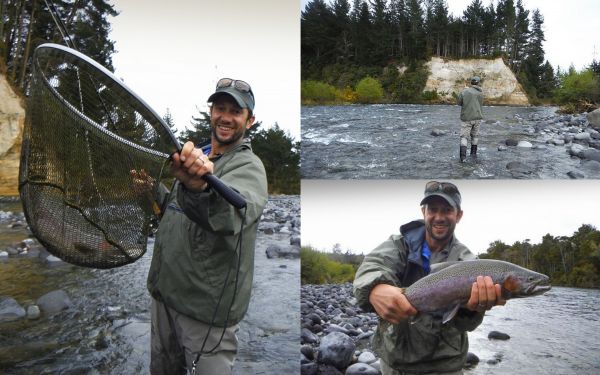 
Ozzie visitor Jamie Knight spent part of his day fishing caddis and scored on the upper river.
While George and Marsha from Florida concentrated on the middle and town stretches where the retired college professor landed this jack on caddis, sight-fishing in the Braids.
George hadn't picked up a fly rod for over fifty years and at 83 yrs young proves its never to late to give it a try again.
I asked him his secret and he told me it was all down to marrying a beautiful younger woman who's also a fantastic cook.
Well I got the first bit right ... but unfortunately the knobs on our cooker seized up 26 yrs ago ... ouch!... didn't think she was looking.
Turangi is in for a bit of a heat-wave over the weekend with temperatures into the high twenties, this is expected to continue into next week.
Might even be time to lose the waders in favor of shorts and boots and with lighter winds expect a little bit of an increase in the dry fly action.
There are also a few browns already in the river around town ... so any day now.
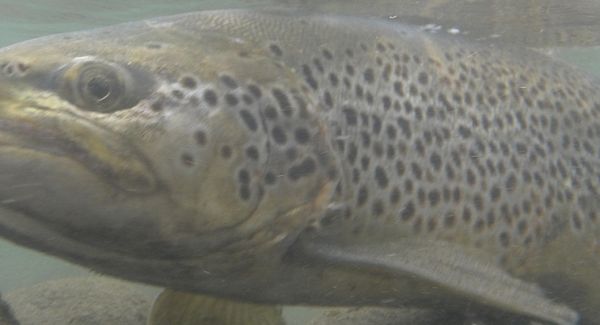
Tight lines guys
Mike |
|
|
| Back to Top |
|
|
|
|
|
|
|